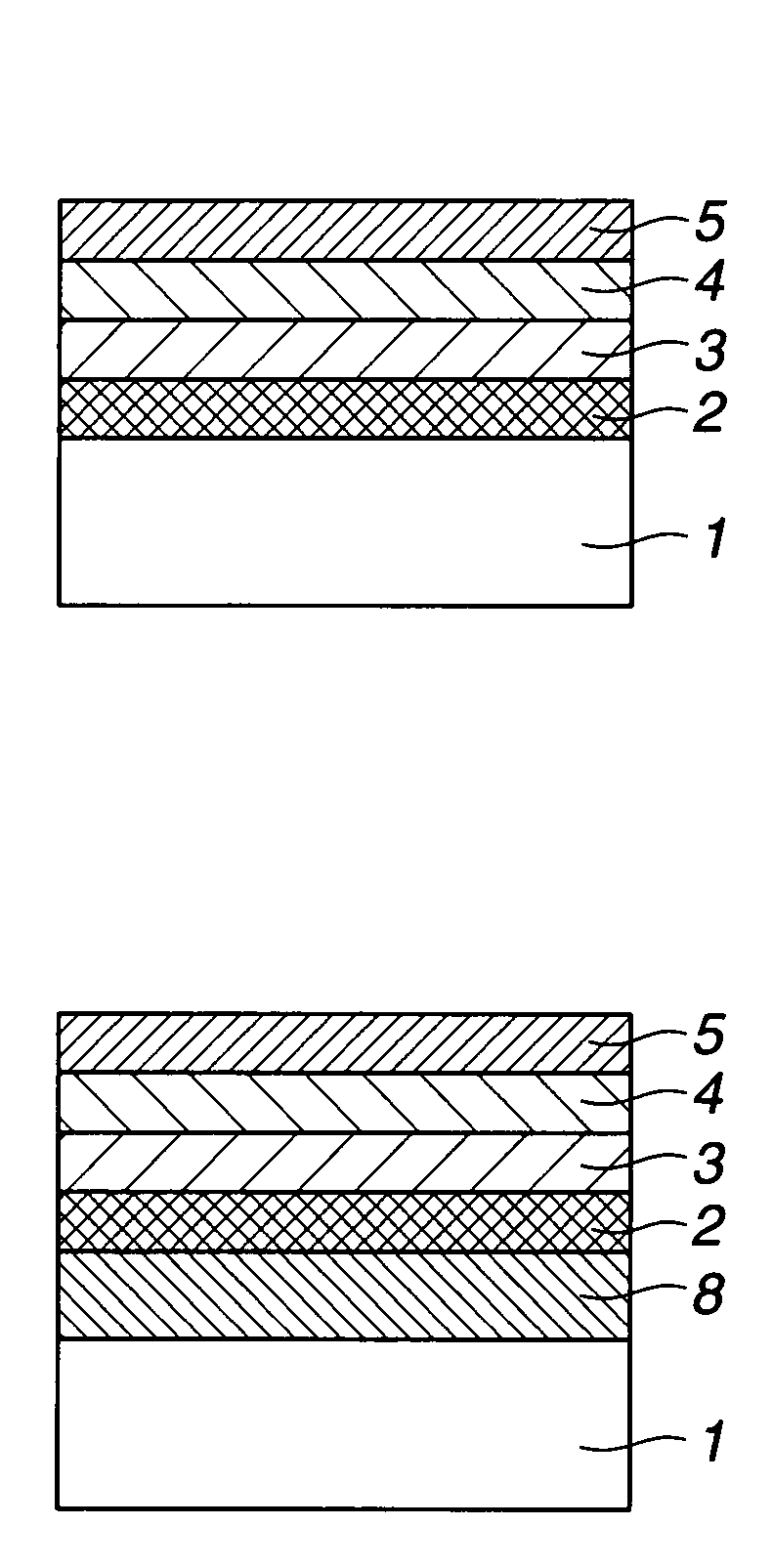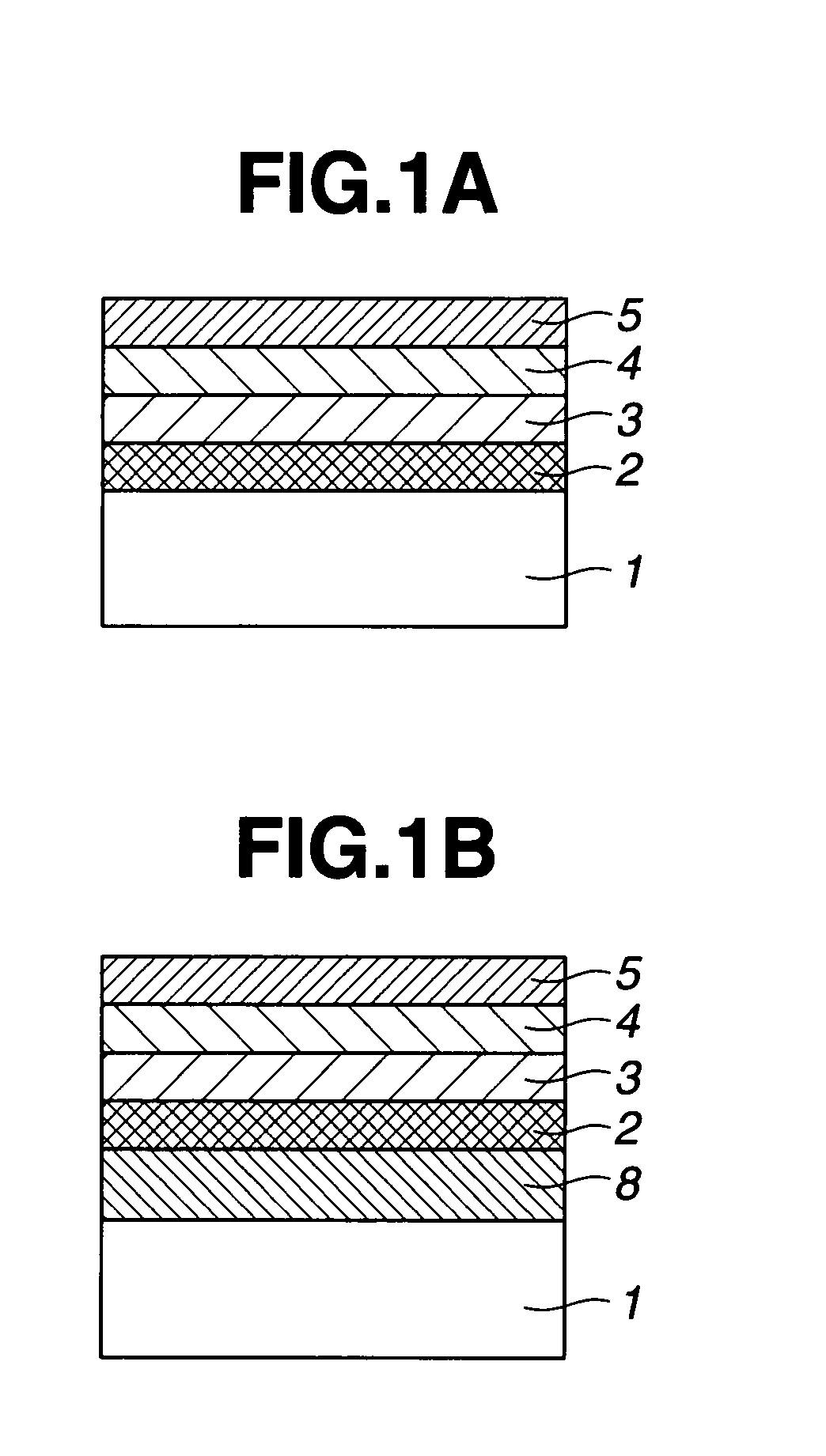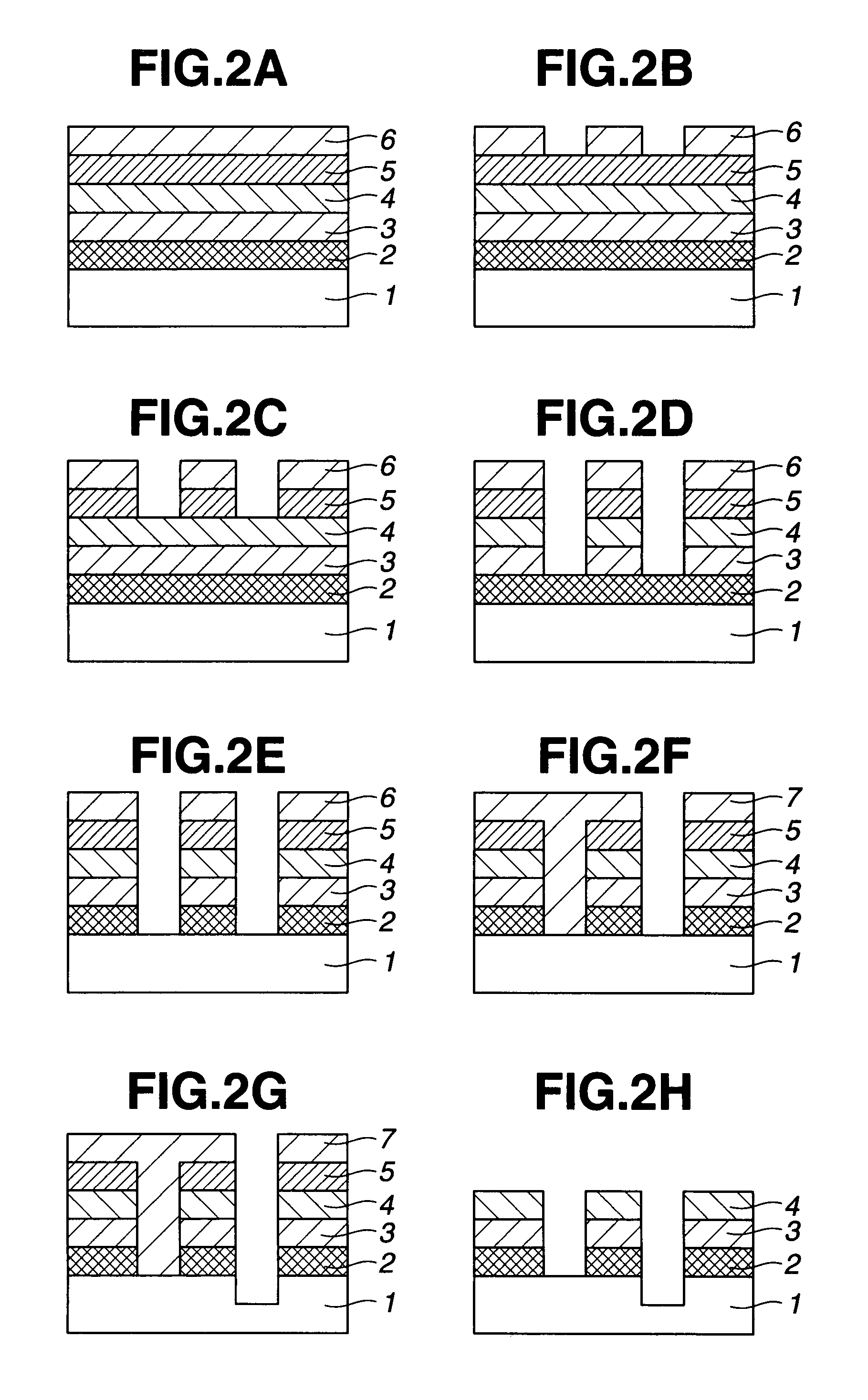Photomask blank
a technology of photomask and blank, applied in the field of photomask blank, can solve the problems of difficult to accurately transfer the resist pattern, the resist pattern may even collapse or separate from the substrate, and the need for accuracy can be relaxed, so as to achieve the effect of higher electrical conductivity
- Summary
- Abstract
- Description
- Claims
- Application Information
AI Technical Summary
Benefits of technology
Problems solved by technology
Method used
Image
Examples
examples
[0075]The Experiments and Examples below are given by way of illustration and not by way of limitation.
Experiments 1 to 15
[0076]Sputtering was carried out using separate molybdenum and silicon targets in an argon atmosphere or an atmosphere of argon gas and nitrogen gas while adjusting the applied power, thereby depositing the MoSi-based material films 1 to 15 (film thickness, 39 nm) shown in Table 1 onto a transparent substrate made of quartz. The film was then immersed for one hour in an ammonia-peroxide mixture (ammonia water / aqueous hydrogen peroxide / water=1:1:30 by volume), and the change (decrease) in film thickness was measured. The change in film thickness and the optical density of each film is indicated in the table below. At a nitrogen content below 5 atom %, the film lacked a sufficient chemical resistance, whereas at a nitrogen content above 40 atom %, the optical density was low, making the film unsuitable for use as a light-shielding film. It was confirmed that at a n...
example 6
[0081]A photomask blank having the film construction shown in FIG. 1A was produced by using sputtering processes to deposit the respective films. The individual films were as follows.[0082]Transparent substrate: Quartz substrate[0083]Etching stopper film: CrN (CR:N=9:1 (atomic ratio); film thickness, 10 nm)[0084]Light-shielding film: MoSiN (Mo:Si:N=1:3:1.5 (atomic ratio); film thickness, 41 nm)[0085]Antireflective film: MoSiN (the composition was graduated in the thickness direction, being Mo:Si:N=1:3:1.5 (atomic ratio) on the light-shielding film side and Mo:Si:N=1:5:5 (atomic ratio) on the side away from the transparent substrate (etching mask film side); film thickness, 18 nm)[0086]Etching mask film: CrN (Cr:N=9:1 (atomic ratio); film thickness, 10 nm)
[0087]This photomask blank was processed in accordance with photomask Fabrication Example A described above, thereby producing a Levenson mask.
[0088]Chemically amplified negative resist films composed primarily of a hydroxystyrene r...
example 7
[0090]A photomask blank having the film construction shown in FIG. 1A was produced by using sputtering processes to deposit the respective films. The individual films were as follows.[0091]Transparent substrate: Quartz substrate[0092]Etching stopper film: CrN (CR:N=9:1 (atomic ratio); film thickness, 10 nm)[0093]Light-shielding film: MoSiN (Mo:Si:N=1:3:1.5 (atomic ratio); film thickness, 41 nm)[0094]Antireflective film: MoSiN (the composition was graduated in the thickness direction, being Mo:Si:N=1:3:1.5 (atomic ratio) on the light-shielding film side and Mo:Si:N=1:5:5 (atomic ratio) on the side away from the transparent substrate (etching mask film side); film thickness, 18 nm)[0095]Etching mask film: CrN (Cr:N=9:1 (atomic ratio); film thickness, 10 nm)
[0096]This photomask blank was processed in accordance with photomask Fabricating Example B described above, thereby producing a zebra-type chromeless mask.
[0097]Chemically amplified negative resist films composed primarily of a hyd...
PUM
| Property | Measurement | Unit |
|---|---|---|
| thickness | aaaaa | aaaaa |
| thickness | aaaaa | aaaaa |
| OD | aaaaa | aaaaa |
Abstract
Description
Claims
Application Information
 Login to View More
Login to View More - R&D
- Intellectual Property
- Life Sciences
- Materials
- Tech Scout
- Unparalleled Data Quality
- Higher Quality Content
- 60% Fewer Hallucinations
Browse by: Latest US Patents, China's latest patents, Technical Efficacy Thesaurus, Application Domain, Technology Topic, Popular Technical Reports.
© 2025 PatSnap. All rights reserved.Legal|Privacy policy|Modern Slavery Act Transparency Statement|Sitemap|About US| Contact US: help@patsnap.com



